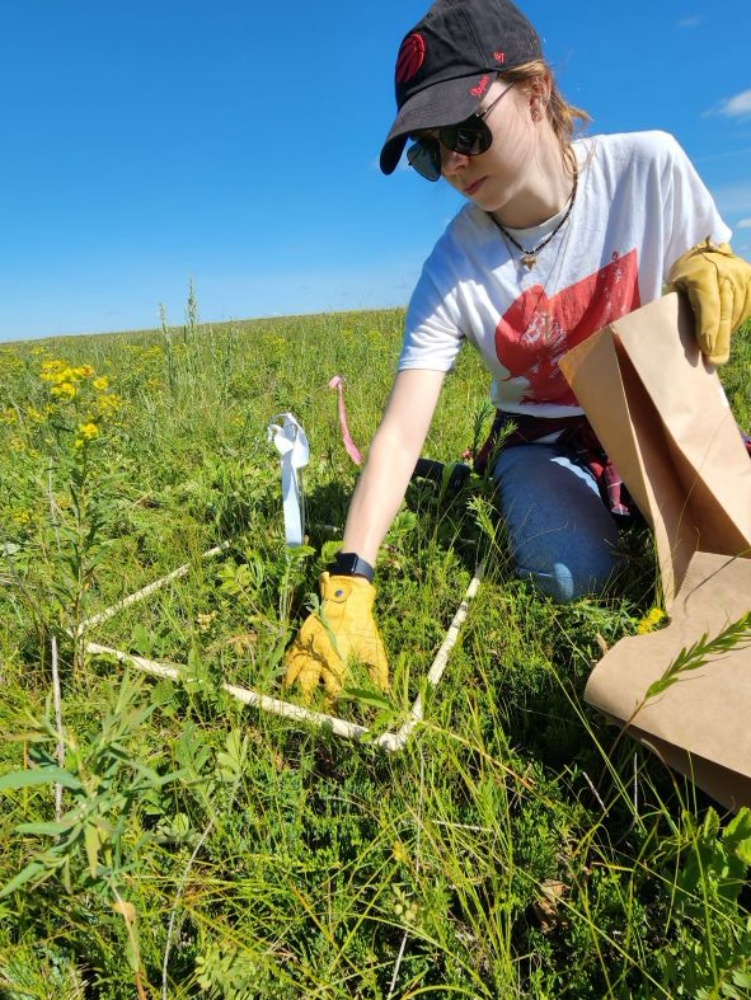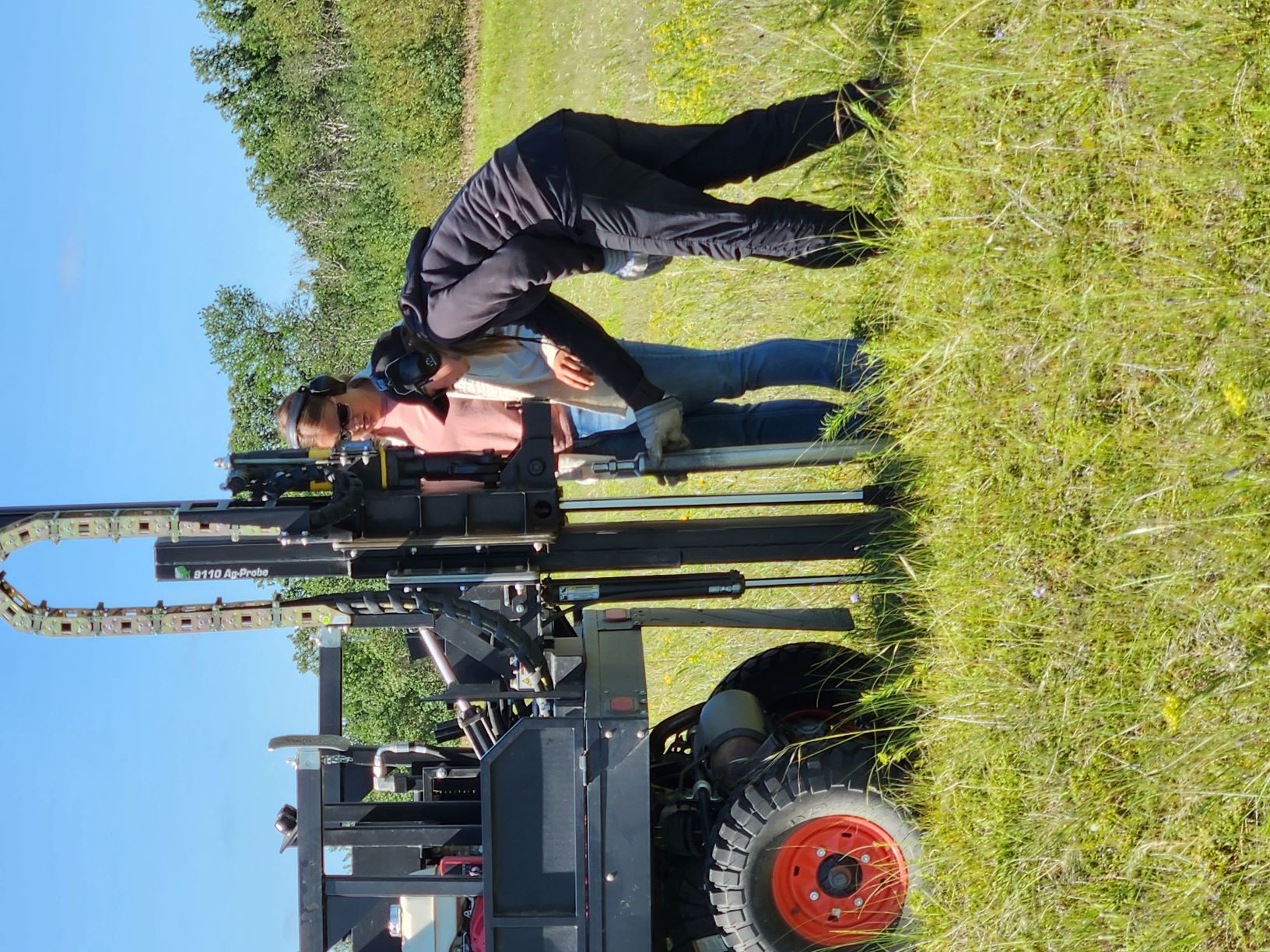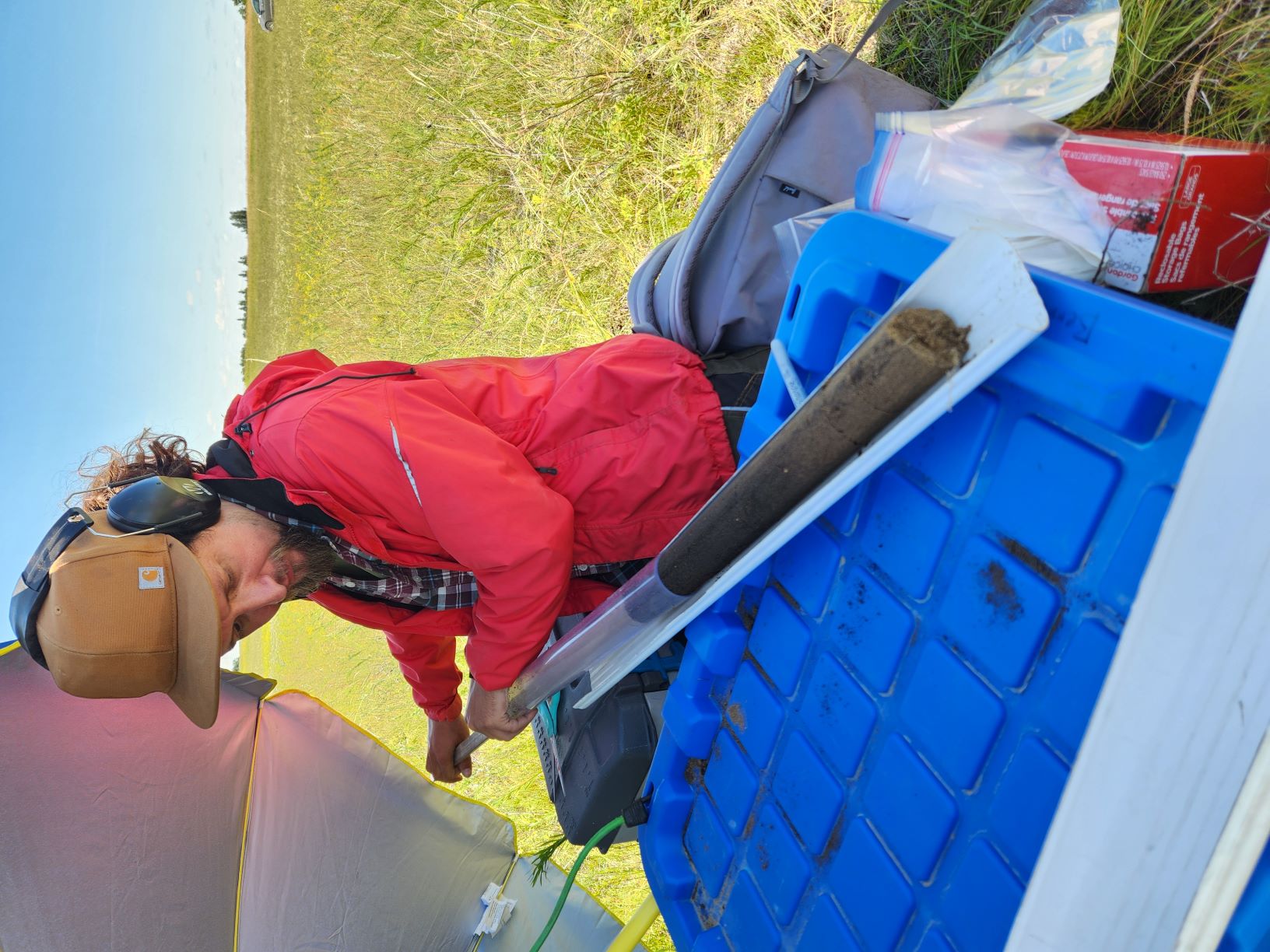
Trinity Rutledge, University of Winnipeg student, collects plant samples. (Photo: Lori Truscott/CFB Shilo Public Affairs)
Lori Truscott
CFB Shilo, Public Affairs for Shilo Stag Media
Prairie More Than Just a Pretty Face
How do insects, grasses, flowers and the soil in which they grow all interact and capture the
carbon in our atmosphere?
Big questions like this need big studies to find the answer and CFB Shilo is playing a role.
Every Canadian summer brings out teams of scientists who use the short weeks of good weather
to collect data. This summer, a vast study, funded by Genome Canada and numerous other
agencies, called Grassland Genomics for Greenhouse Gas Mitigation, is being conducted
throughout Saskatchewan and Manitoba. Several teams of researchers are accessing the CFB
Shilo Range and Training Area (RTA) to gather data for further study.
Led by Dr. Jon Bennett of the University of Saskatchewan and Dr. Sean Asselin of Agriculture
and Agrifood Canada, a team from the University of Saskatchewan was in the RTA in July.
“We’re trying to understand the benefits these grassland ecosystems provide that aren’t obvious,”
John-Paul Wasan, field technician with the U of Sask. said.
Some of these “hidden” benefits are flowers for pollinators, carbon sequestration, wildlife habitat
and haven for beneficial microorganisms that live in the soil.
The Shilo team conducted insect, plant and soil sampling. With a focus on Purple Prairie Clover
and Sand Reed Grass the teams collected samples of the plants as well as a neighbouring
locations’ plants. Soil samples are taken from each specific location. Back in the lab DNA is
extracted and sequenced to indentify insects and microbes.
The goal is to understand the genetics of these interactions with the idea that, possibly, cultivars
could be developed. Ranchers and agriculture managers could then plant and grow these plants
to improve their grasslands.
Finding good habitat to study is increasingly hard. The researchers noted Shilo’s large area of
undisturbed prairie is ideal for them as it is well-managed and supports a lot of biodiversity.
“Because Shilo is such a good steward of the land it provides a lot of good research
opportunities,” Wasan said.
Fellow team member and PhD student Itaii Appelbaum agrees. From Israel, Appelbaum was
looking for a project to further his soil ecology studies and is now pursuing his doctorate at the U
of Sask. He leapt at the chance to be part of the opportunity to take a holistic picture of an
ecosystem.
“To be able to cross-reference data from so many different aspects is rare for us. We’ve saved
time (being in Shilo) because we don’t have to spend time hunting for the plants we want to
study. They’re all in one place.”
He also found that he loves the prairie despite arriving in Saskatchewan in January.
CFB Shilo’s RTA is featured in many biological research studies spanning decades. Several
western Canadian universities’ research teams study the plants and animals that live here. It is a
large area of pristine prairie that is home to many insects, birds, animals and plants that are
seeing their habitat destroyed elsewhere.
Both Wasan and Appelbaum give credit to CFB Shilo and, especially, the Base Environment
team for land stewardship.
“The commitment to protect the natural area is impressive,” Appelbaum noted.

A team of research students begins to collect a soil sample from the CFB Shilo RTA for further
study into how plants, soil and insects all interact to store carbon in the ground. (Photo: Lori Truscott/CFB Shilo Public Affairs)

Itaii Appelbaum – PhD student University of Saskatchewan, prepares soil samples for further
study. The top layers of soil are where most carbon sequestration takes place. (Photo: Lori Truscott/CFB Shilo Public Affairs)

